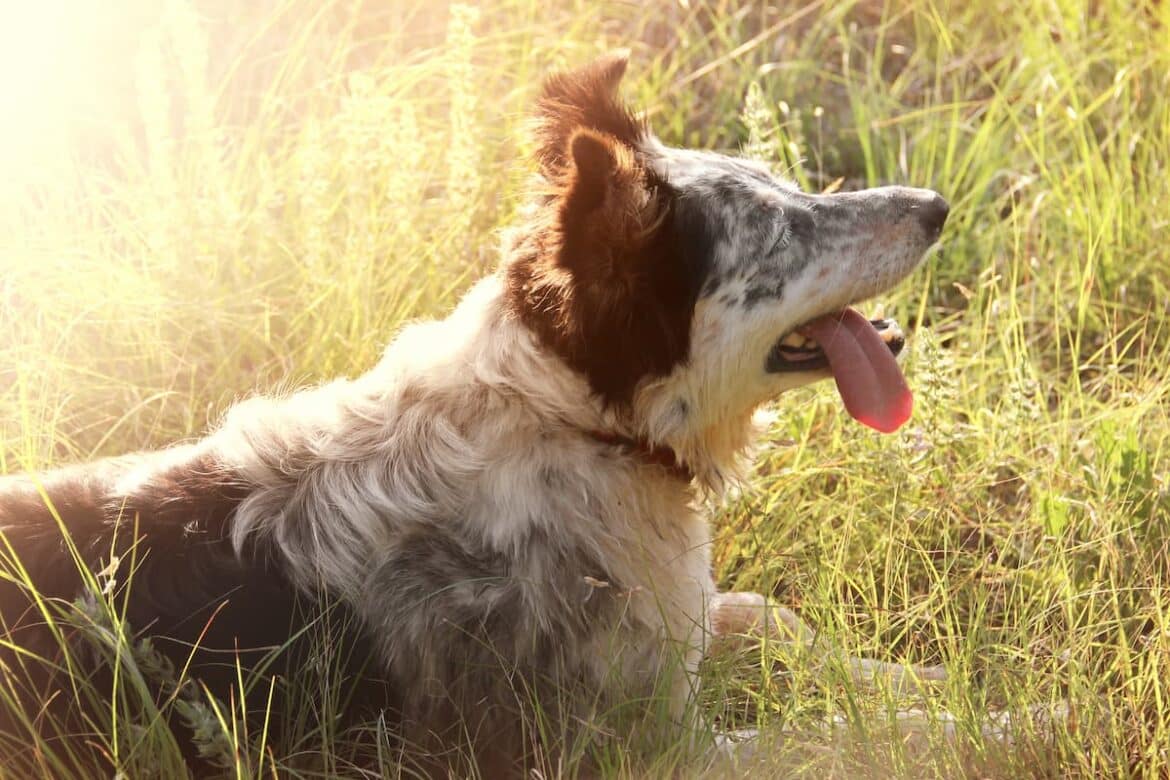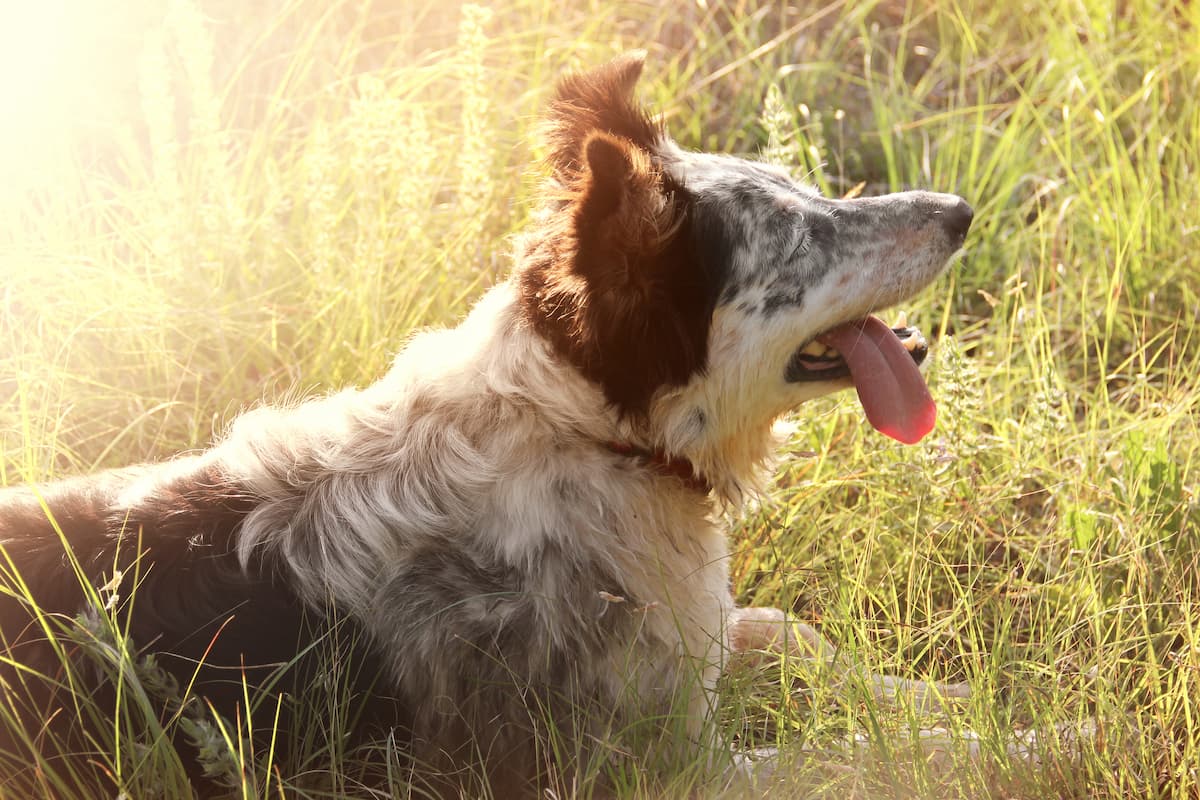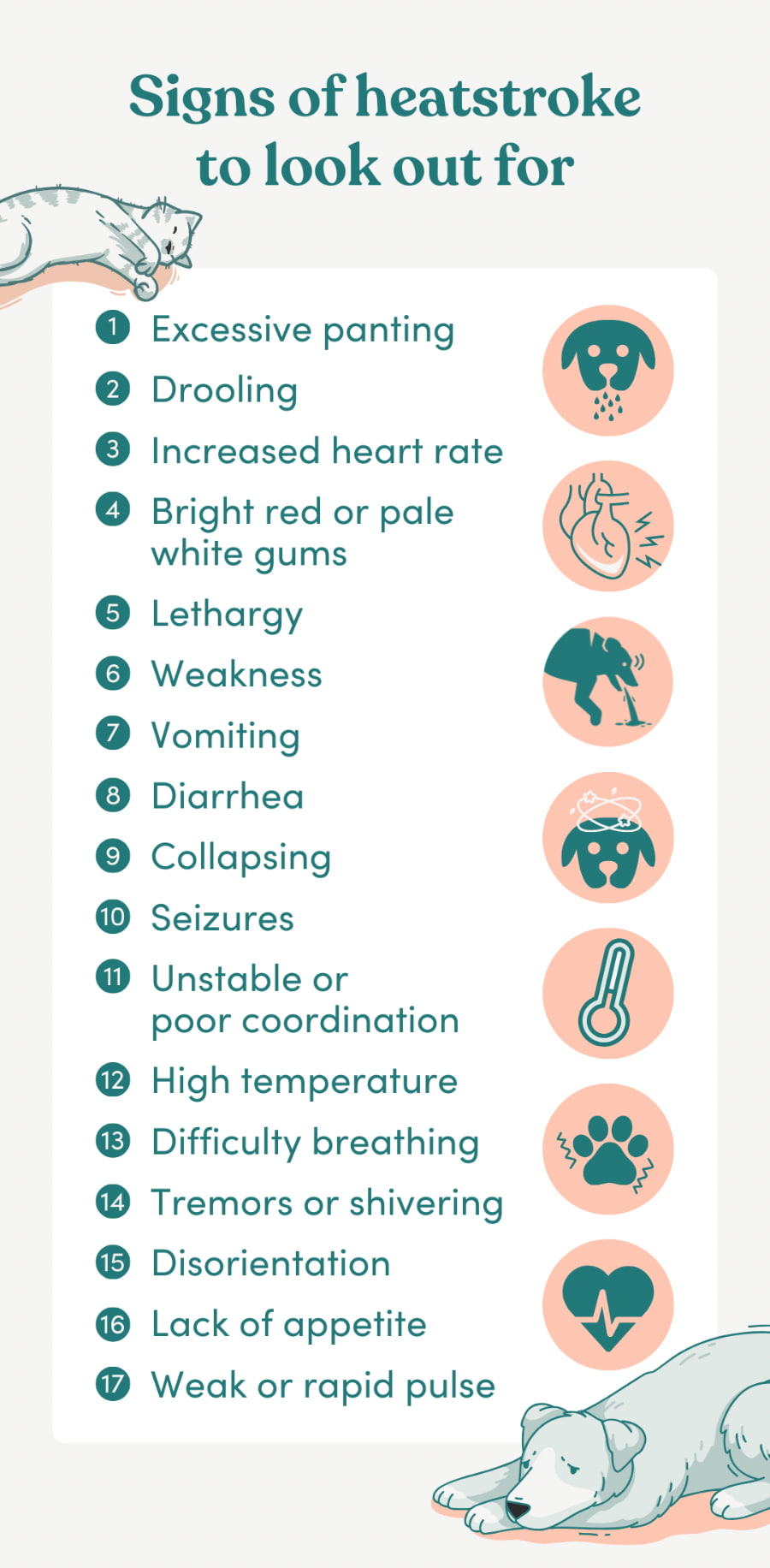Australian summers bring brutal temperatures and our little furry friends are very vulnerable to the heat, so it’s crucial to know how to keep them safe. Each pet will have a different tolerance for heat based on numerous factors including age, size, breed, coat, health but heatstroke in pets is very real in our harsh climate.
In this article, we’ll share the common signs to look for that may indicate heatstroke in pets. And, 10 factors to consider when caring for your pet in hot weather, and how to keep them cool and comfortable.
Identifying heatstroke in pets
Heatstroke in pets is a serious and potentially life-threatening condition that occurs when an animal’s body temperature rises to a dangerous level. Signs of heatstroke in pets can vary and can look very different each time. One symptom doesn’t always guarantee heatstroke, however, if a pet is experiencing two or more of the below symptoms or you’re concerned, always seek veterinary care and take immediate action to begin cooling them.
Common signs of heatstroke in pets include:
-
Excessive panting: Dogs and cats regulate their body temperature through panting. If they’re panting excessively and unable to cool down, it may be a sign of heatstroke.
-
Excessive drooling: Increased drooling can be a sign that a pet is struggling to cool down and is dehydrated.
-
Rapid heartbeat and breathing: An elevated heart rate and rapid breathing are signs that the body is under stress.
-
Bright red gums and tongue: This indicates increased blood flow to these areas as the body attempts to cool itself.
-
Staggering or weakness: Pets may exhibit signs of weakness, confusion, or even collapse if they are experiencing heatstroke.
-
Vomiting or diarrhea: Heatstroke can lead to gastrointestinal distress, including vomiting and diarrhea.
-
Seizures: In severe cases, heatstroke can cause seizures.
-
Unresponsiveness or coma: If the heatstroke is not addressed promptly, it can lead to loss of consciousness and even coma.
It’s important to note that certain pets – such as brachycephalic breeds (e.g. Bulldogs, Pugs), older animals, and those with pre-existing health conditions – are more susceptible to heatstroke. As each pet has their tolerance, they will also have different techniques to manage them so it’s important to understand the pet’s limits and use appropriate management techniques.
Because pets are physically smaller than humans, their heat tolerance is already much lower than ours so it’s never safe to base their tolerance on how you’re feeling.
How to keep pets cool in hot weather
To help determine how much you need to manage the pet, figure out their baseline. For example, If it’s 25 degrees and they’re resting on the couch but already panting to keep cool they’re not going to cope with the heat. However, some pets are highly strung and won’t slow down even if they’re hot or not feeling well so it’s important to set boundaries in the heat regardless of the pet’s mood.
Running aircon 24/7 and keeping pets inside isn’t realistic so read on to find out which management techniques will work for you.
1. Ensure there’s airflow
Make sure your pet is never stuck somewhere without airflow so the room doesn’t heat up and get too hot. Leaving windows open, having fans on, and having aircon on is the easiest way to do so. For example, never leave a pet in the car, especially on hot days as a still car will get practically no airflow and can cause heatstroke in as little as minutes. It doesn’t matter if you keep the windows open or closed either, it’s about the lack of airflow that is dangerous for them.
2. Access to water supply
Always ensure your pet has access to a minimum of 2 water bowls at all times. If you have more than one pet, you need to allow for more water bowls so they each have the adequate amount. Ensure to leave all water in the shade, and check and refresh it every 2-3 hours. It’s also important to monitor how much each dog drinks – sometimes they may not drink as much as they should. You can entice them by placing food at the bottom of the water bowl or adding water to their meals.
Another point here is that you need to make sure it’s safe drinking water. On hot days, they’re more likely to drink from ponds etc. So if a water source like a chlorine pool or murky pond is in the vicinity, make sure it’s blocked off.
3. Limit their exercise
Exercise will increase your pet’s body temperature, regardless of the weather, so limiting their exercise can help keep their body temperature at a safe level. As well as maintaining temperature, dogs specifically are at higher risk of burns from hot pavement if walked when it’s too hot. To tell if the pavement is too hot, if you can’t hold the palm or back of your hand on it for more than 7 seconds it’s too hot.
Any temperature above 25 degrees is when you need to consider limiting exercise. For elderly or compromised dogs, no exercise is ideal. For healthier younger dogs, a short walk in the cooler parts of the day and plenty of breaks from playing with other dogs is sufficient. Any temperature above 30 degrees all dogs should avoid exercise or rough play to minimise risk.
4. Provide shade and shelter
Always make sure that there’s some form of shade and shelter that the pet has access to. If you know that the only tree in your yard provides shade from 10am-1pm, for example, they will be exposed to the elements for hours. So in this case, you could set up a tarp, a roof or another shade provider to help give them somewhere to retreat to. Ideally, the shelter available should be shaded 24/7 so it stays as cool as possible.
5. Limit their sun baking
Plenty of pets – especially cats and dogs – love to lay out in the sun and sun bake! But this needs to be monitored and stopped for 2 main reasons. Firstly, it can lead to heatstroke because pets don’t know they’re over-heating and won’t always move themselves out of the sun. Secondly, similar to humans it increases the risk of skin cancer significantly.
While you don’t need to deny them of any bit of time in the sun, it’s advised to set a timer for 3-5 minutes and then bring them into the shade. If you’re leaving pets unattended, ensure to move beds out of the sun to avoid accidental or excess sun baking.
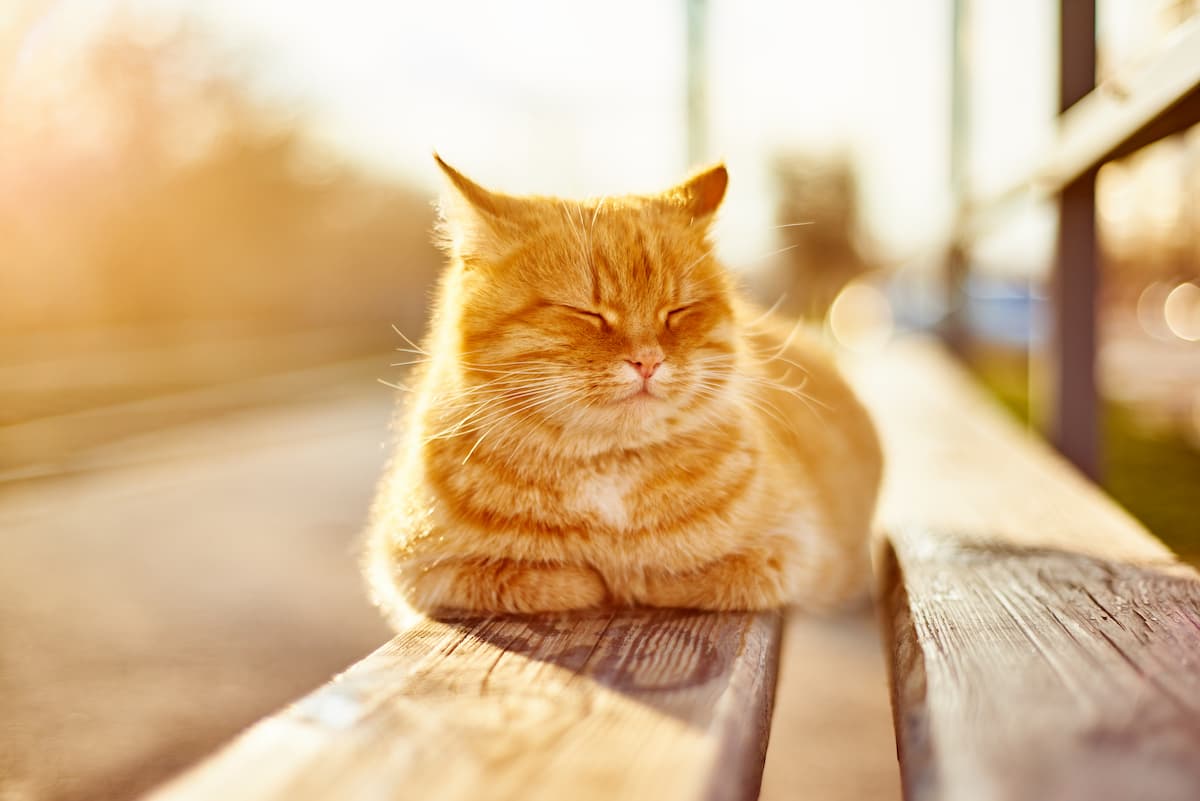 6. Consider a cooling mat
6. Consider a cooling mat
Cooling mats and pads are a great (waterless) way to help pets cool down. If they’re not inclined to use them or dislike them you can try placing them on their bed or under a towel. The great thing is you can get variations of these cooling mats for pets – some don’t need to be frozen or have a water source, which makes them easy to maintain. In terms of placement, they’re best laying under the pet so it helps cool their core and vital organs.
7. Keep up their grooming
The importance of grooming varies greatly on the breed and coat. Some dogs, like poodle mixes, are best shaved right down in Summer to help keep them cool…whereas other breeds like Border Collies are best left ungroomed as their coat can aid heat regulation and if shaved they can be compromised.
8. Frozen (or cold) treats
Make small frozen treats to help them feel cool and stay hydrated. Pup-sicles are a simple treat as well – you can freeze fruit and water, water and peanut butter or bone broth. Lickimats are also great for spreading their favourite treat on the mat and popping it in the freezer, offering a longer lasting treat for them to digest slowly. It’s important to remember not to give them too much either, as a drastic difference in internal to external temperature can lead to complications (can constrict blood vessels and inhibit cooling).
9. Invite them to enjoy water play
Splashing about is a summertime favourite for plenty of dogs, letting them swim, providing a shallow kiddy pool or wetting them with the hose is a great way to keep them cool. When pets are around water, just ensure they’re supervised and not over-exerting themselves. There’s always a small chance of secondary drowning which can happen when they’re swallowing too much water so it’s important to keep an eye on them while playing.
10. Breed specific care
Breed is a great indicator of a dog’s heat tolerance because it provides general assumptions on size, health status etc. For example, brachycephalic or flat-faced dogs are much more at risk in the heat due to their breathing issues. Whatever the breed, it’s important to learn what they can and can’t tolerate so you can care for them accordingly.
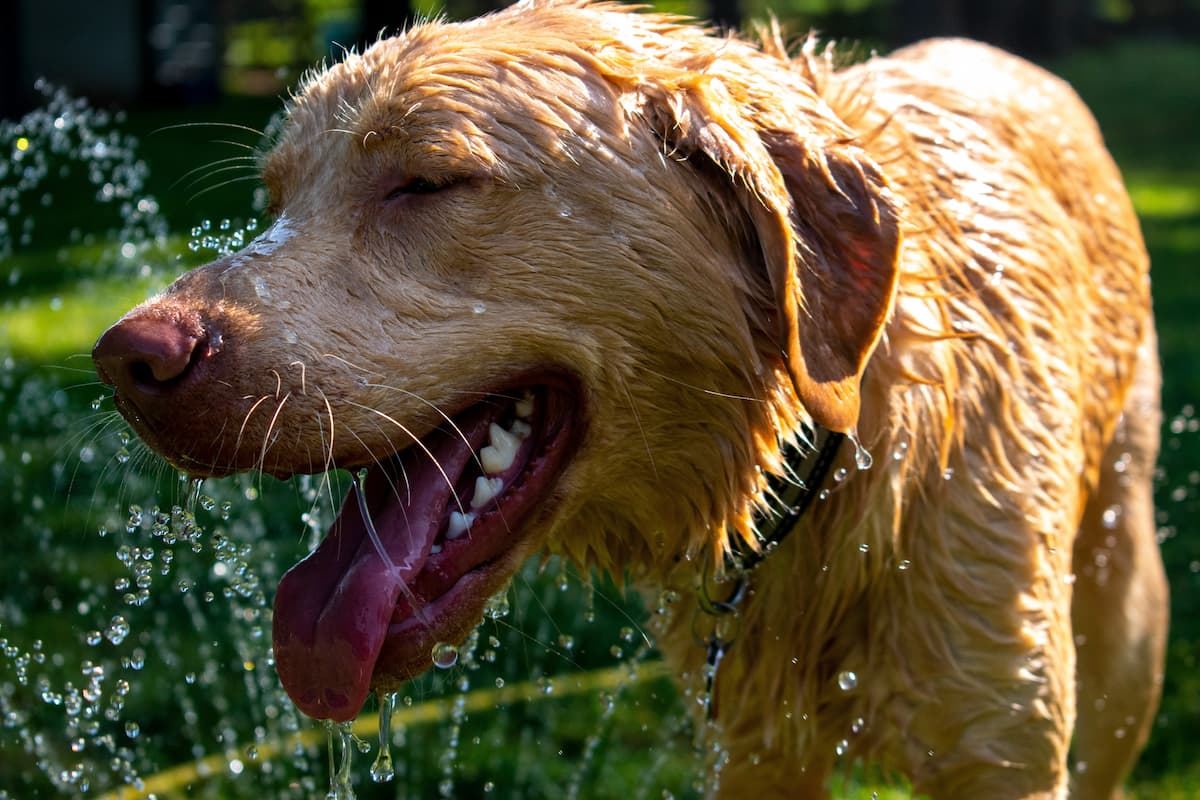
Did you know…
Mad Paws Pet Sitters have the know-how to care for your four-legged friend all conditions, and in particular the warmer weather. So if you’re going away, or need someone to look after your pet, you can be assured that all the above ways to prevent heatstroke and to keep them cool and comfortable will be provided!
Search for a Pet Sitter near you >

